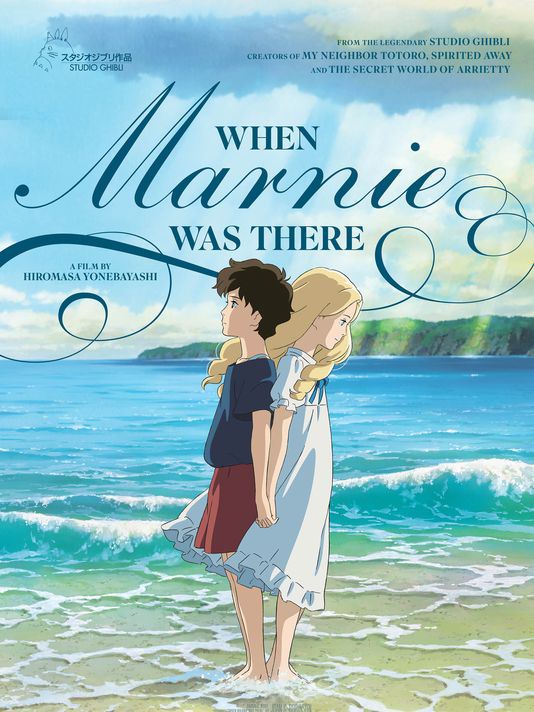ROBERT DYLAN FIELDS WRITES- Many of us in our early teenage years have to cope with self-doubt and struggle with our sense of self-worth. We may sometimes feel isolated from our peers and have difficulty bonding with other people. For some, this struggle can be much more severe, leading many to live as loners. Sometimes people really need that one special person, be it a friend and/or family member, to come into their lives and help break them out of their shell. And sometimes, just as they can be helped by that one special someone, they can learn to help that special someone back and impact his/her life in an incredible way. This is what Studio Ghibli’s adaptation of Joan G. Robinson’s When Marnie Was There is all about.
Directed by Arrietty’s Hiromasa Yonebayashi, When Marnie Was There tells the story of Anna Sasaki (Sara Takatsuki), a timid young tomboy from Sapporo who spends her time at school drawing sketches alone. She is exceptionally talented with her artwork, but she is too shy to show it to anyone out of fear of rejection. Living in government subsidized foster care with her aunt, she is convinced that she is unwanted, unattractive, and worthless, which unfortunately leads her to hate herself.
In order to help cope with her social anxiety as well as her asthmatic symptoms, her aunt sends Anna to spend the summer with her relatives in Kushiro, a rural seaside town in Hokkaido. Despite the change in atmosphere, Anna still struggles socially, but soon that all changes when she comes across a seemingly abandoned villa. After learning that it used to be a vacation home for foreigners years ago, she suddenly experiences mysterious dreams of a young blonde girl inside the villa. One night when she returns to the villa, not only is it inhabited once again, but the girl she dreams of, the eponymous Marnie (Kasumi Arimura), is there waiting for her.
Marnie is the exact opposite of Anna: she is pretty, cheerful, outgoing, and most importantly lives in a full house with her parents, making her everything that Anna wants to be. Despite being polar opposites, Marnie is instantly smitten with Anna and the two become close friends. As the two become closer, not only does Marnie uplift Anna, but Anna soon learns more about Marnie’s struggles that she keeps to herself, projecting a façade of a seemingly perfect childhood. It becomes clear that just as Anna needs Marnie, Marnie needs her just as much if not more so. However, Marnie has a strange habit of disappearing and reappearing before Anna, leading Anna to despair over whether Marnie truly cares for her or if she even exists.
Yonebayashi and Ghibli masterfully bring this story to life. While Marnie may come off as a simple story, Ghibli always knows how to take such a simple concept and bring it to life in such a gorgeous way through their magical prowess in animation. Even the story itself transforms from a simple tale of friendship to something much more when the film reveals a surprising twist at the end. Marnie is thus a story about how all people are capable of receiving and giving such sincere feelings of affection and love no matter how unloved and unvalued they think themselves to be. With such masterful adaption from Ghibli complete with Priscilla Ahn’s wonderfully matched theme song “Fine on the Outside,” When Marnie Was There is a sweet story that anyone will enjoy.
Shortly after the film’s release in Japan, Ghibli head Toshio Suzuki announced that the studio would go on hiatus from filmmaking to re-evaluate and restructure themselves in the wake of Miyazaki’s retirement. This led many to believe that Marnie could very well be Ghibli’s final animated work. In fact, Miyazaki himself believes that Ghibli won’t last long following his retirement. Even if this outlook turns out to be true, this does not mean the end of Japanese animation: Yonebayashi and Ghibli’s gifted animators have made it clear that they have the ability to create such a brilliant work of art, even without the aid of the gifted minds of Miyazaki and Takahata.
When Marnie Was There is distributed by GKids and is currently playing for a limited release in select theaters.

